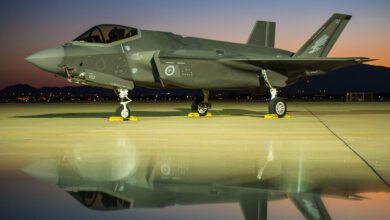Chinese Ship Docks in Sri Lanka Despite India, US Concerns
A Chinese research vessel entered Sri Lanka’s Chinese-run southern port of Hambantota on Tuesday despite concerns from India and the United States about its activities.
The Yuan Wang 5 entered the Hambantota deep sea port after securing permission to enter Sri Lankan waters on the condition it will not engage in any research, port officials said.
The vessel was originally due to arrive last week, but Colombo asked Beijing to defer the visit following objections by India, which shares Western concerns about Chinese activities in the region.
But on Saturday, after intense negotiations, Colombo announced a U-turn, saying permission had been granted for the ship to dock at Hambantota and remain for six days.
Shipping analytics websites described the Yuan Wang 5 as a research and survey vessel, but according to Indian media, it is a dual-use spy ship.
New Delhi is suspicious of Beijing’s increasing presence in the Indian Ocean and influence in Sri Lanka, seeing both as firmly within its sphere of influence.
A day before the arrival of the vessel, India gifted a Dornier 228 surveillance aircraft to Sri Lanka in a bid to bolster the island’s maritime surveillance capabilities.
The Chinese ship was allowed into port on the condition it keeps its Automatic Identification System (AIS) switched on while in Sri Lankan waters and is not allowed to carry out scientific research.
The Hambantota port is run by China, which leased it for 99 years for $1.12 billion, less than the $1.4 billion Sri Lanka paid a Chinese company to build it.
According to Indian reports, the Yuan Wang 5 could be employed for space and satellite tracking and has specific uses in intercontinental ballistic missile launches.
The Indian government has expressed concern that the ship could spy on its activities, lodging a complaint with Colombo. The United States also expressed concern about the ship.
Chinese spy vessel Yuan Wang 5 docks at Sri Lankan port of Hambantota this morning. pic.twitter.com/hkO5N8suJ7
— Sidhant Sibal (@sidhant) August 16, 2022
Chinese Debt
Sri Lanka borrowed heavily from China between 2005 and 2015, and in 2017 gave Beijing its lease on the Hambantota port, which is located on major East-West shipping lanes, after falling behind on debt repayments.
China remains Sri Lanka’s biggest bilateral creditor, owning over 10 percent of the island’s foreign debt.
Beijing’s support is essential for Colombo, currently suffering a dire economic crisis, to restructure its external borrowing to qualify for a bailout from the International Monetary Fund.
On August 4, President Ranil Wickremesinghe “reiterated Sri Lanka’s firm commitment to the one-China policy” after US House Speaker Nancy Pelosi visited Taiwan, warning against “non-interference in the internal affairs of countries.”












